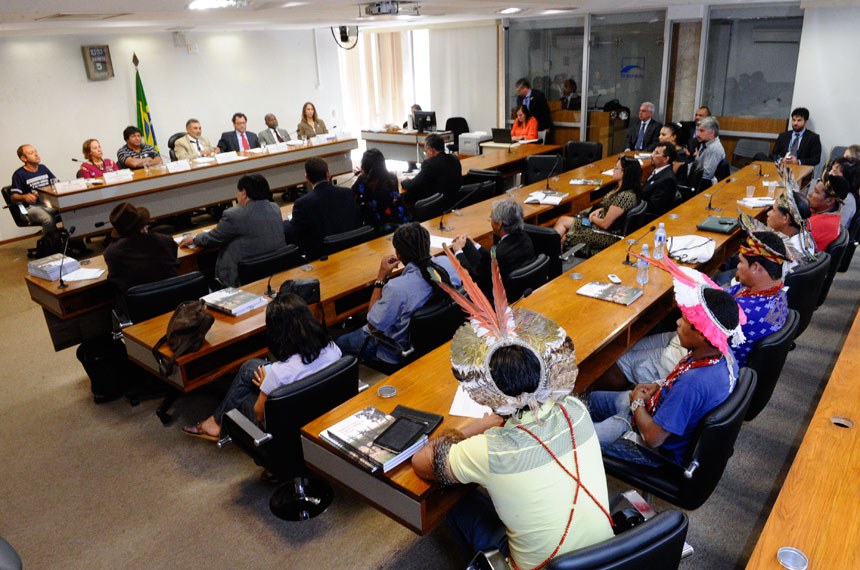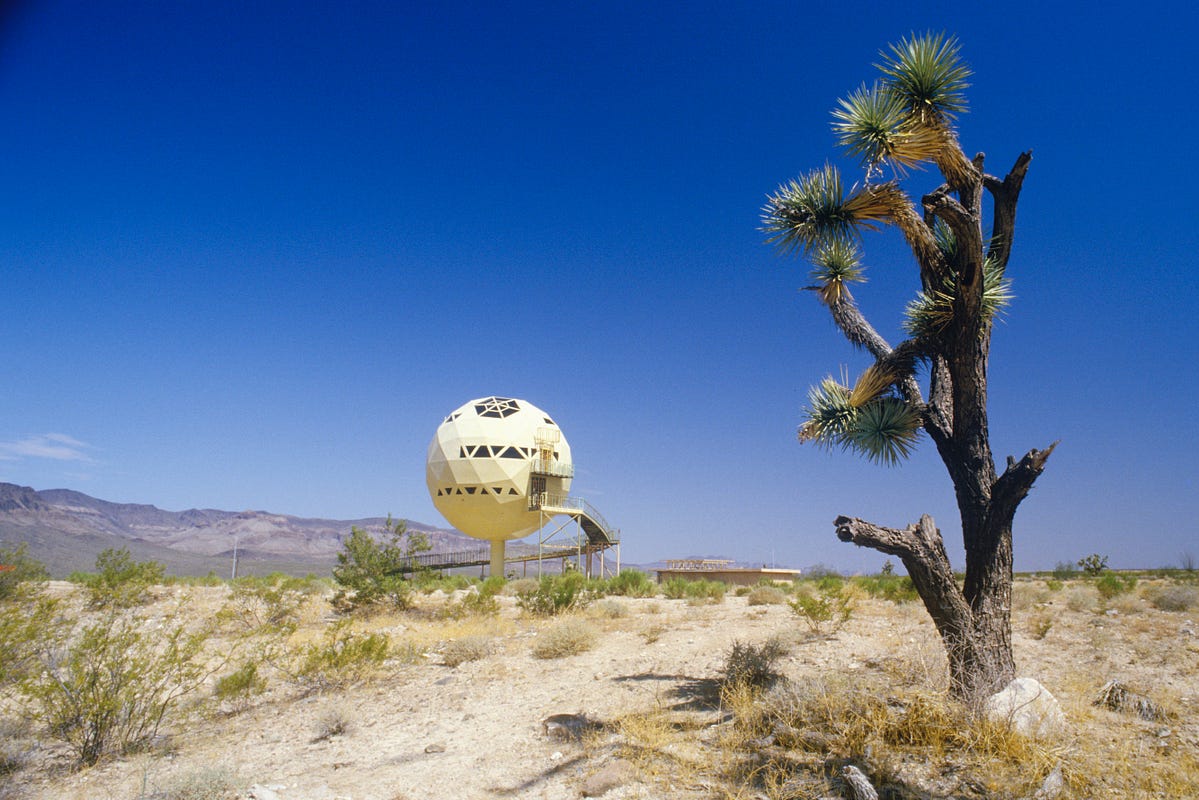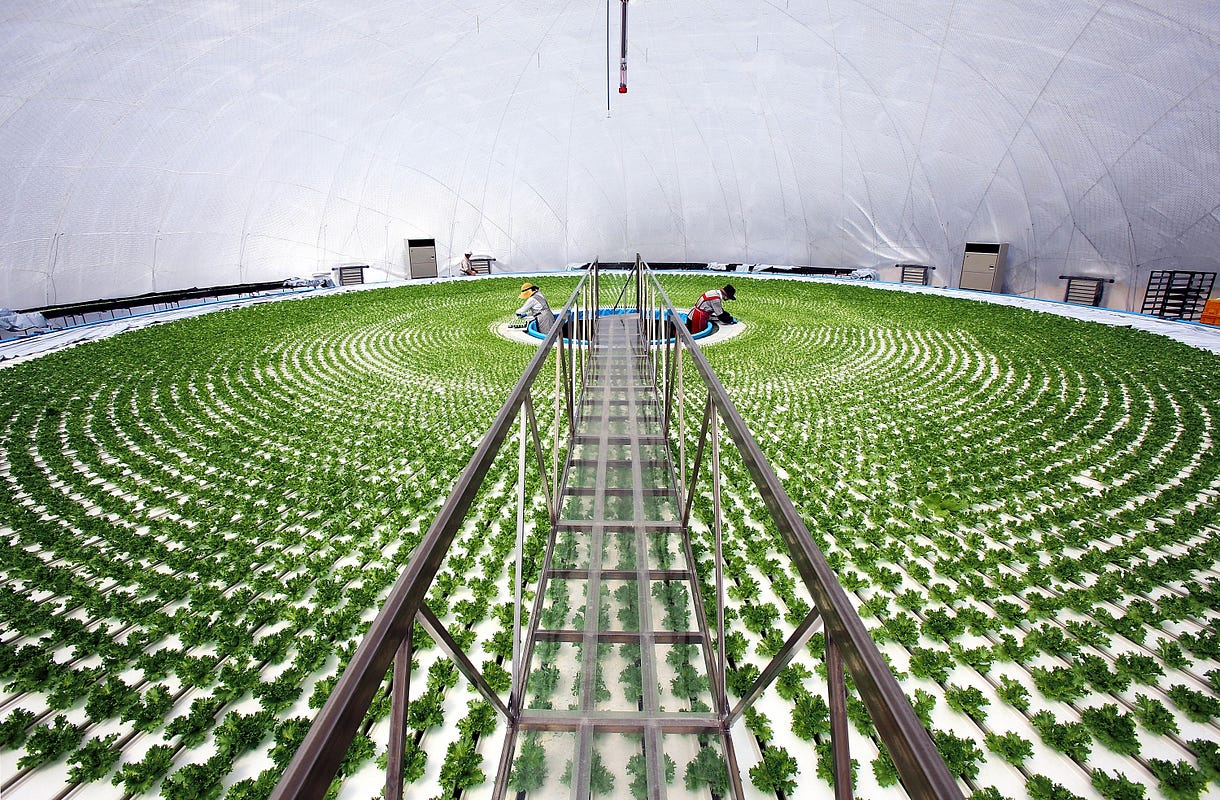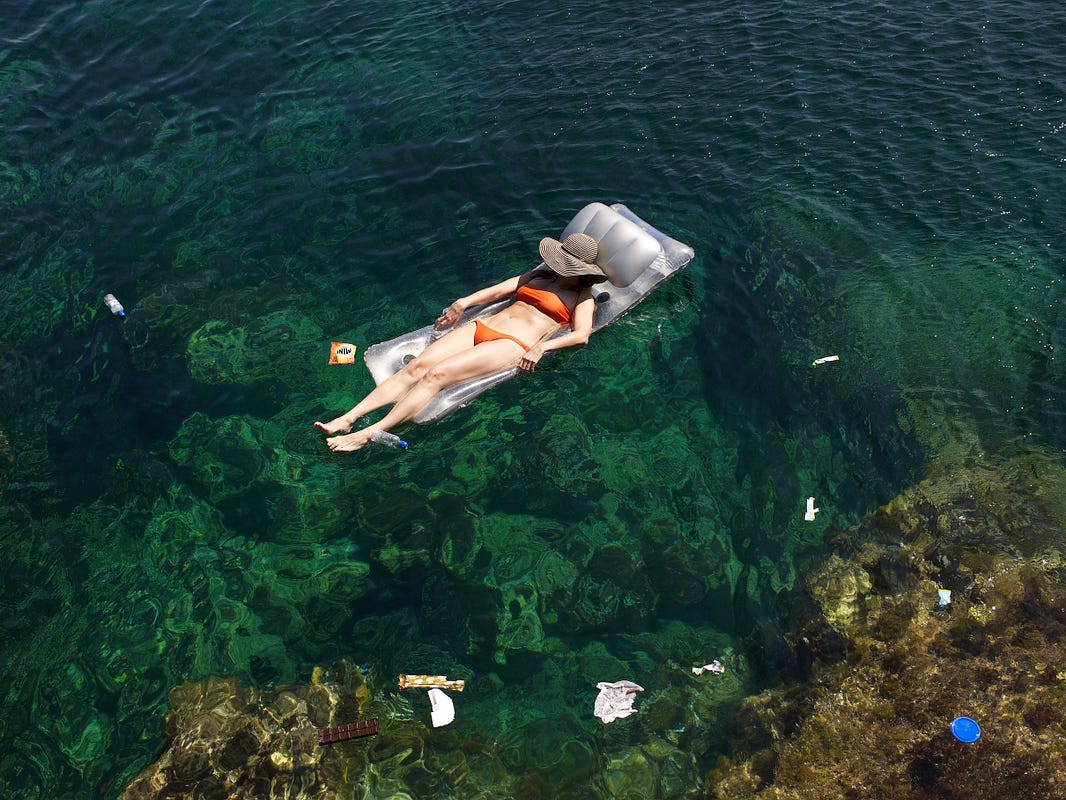To kick off this issue, we begin with Sean Seary’s excellent overview of recent literature about anthropology’s engagement with climate. This review originally appeared on Anthropology Report, has been reproduced here to give us a solid foundation for moving forward. Seary, a recent graduate from Hartwick College, currently lives in Brunswick, Maine. His research interests focus on the convergence of anthropology and climate change. Seary’s work has also been featured on PopAnth. –R.A.
Introduction: Anthropological Interventions
Since the 1960s, global climate and environmental change have been important topics of contemporary scientific research. Growing concerns about climate change have introduced a (relatively) new variable in climate change research: the anthropogenic causes of local-global climate and environmental change. Despite archaeologists providing some of the first research and commentary on climate change–a point that is explored in Daniel Sandweiss and Alice Kelley’s Archaeological Contributions to Climate Change Research: The Archaeological Record as a Paleoclimatic and Paleoenvironmental Archive–the field of climate and environmental change research has been predominantly studied by “natural scientists.” This is where Susan Crate’s Climate and Culture: Anthropology in the Era of Contemporary Climate Change in the 2011 Annual Review of Anthropology intervenes. Crate calls for anthropological engagement with the natural sciences (and vice versa) on global climate change discourse, with the intention of creating new multidisciplinary ethnographies that reflect all the contributors to global environmental change.
Crate’s review begins by stating that the earliest anthropological research on climate change was associated with archaeologists: most of whom studied how climate change had an impact on cultural dynamics, societal resilience and decline, and social structure. Anthropological and archaeological engagement with climate change revolved around how cultures attributed meaning and value to their interpretations of weather and climate. Archaeology has long been working on understanding the relationship between climate, environment, and culture. Historically, archaeologists have worked with “natural” scientists in the recovery of climate and environmental data pulled from archaeological strata (Sandweiss and Kelley 2012:372). Such works include Environment and Archaeology: An Introduction to Pleistocene Geography (Butzer 1964), Principles of Geoarchaeology: A North American Perspective

Contemporary anthropological analysis of climate change usually focuses on adaptations towards local climate, temperature, flooding, rainfall, and drought (Crate 2011:178). Climate change impacts the cultural framework in which people perceive, understand, experience, and respond to the world in which they live. Crate believes that because of anthropologists’ ability to “be there,” anthropologists are well-suited to interpret, facilitate, translate, communicate, advocate, and act in response to the cultural implications of global (and local) climate change. Understanding the role that people and culture play in understanding land use changes is crucial to defining anthropology’s engagement with climate change. Anthropologists, as well as scientists from allied disciplines must engage in vigorous cross-scale, local-global approaches in order to understand the implications of climate change (Crate 2011:176).
Crate urges that anthropology use its experience in place-based community research and apply it to a global scale, while focusing on ethnoclimatology, resilience, disasters, displacement, and resource management. By studying people living in “climate-sensitive” areas, anthropologists can document how people observe, perceive, and respond to the local effects of global climate change, which at times can compromise not only their physical livelihood, but also undermine their cultural orientations and frameworks (Crate 2011:179). Anthropology is well positioned to understand the “second disaster,” or sociocultural displacement which follows the first disaster (physical displacement), as a result local environmental and climate change. Some of these “second disasters” include shifts in local governance, resource rights, and domestic and international politics (Crate 2011:180). These “second disasters” present yet another challenge to anthropology’s involvement with global climate change: that global climate change is a human rights issue. Therefore, anthropologists should take the initiative in being active and empowering local populations, regions, and even nation-states to seek redress for the damage done by climate change (Crate 2011:182) It is the responsibility of anthropologists working in the field of climate change to link the local and lived realities of environmental change with national and international policies.
In order to accommodate to the rapidly changing (human) ecology, anthropology is in need of new ethnographies that show how the “global” envelops the local, and the subsequent imbalance (environmental injustice/racism) that it creates during this process. Crate urgently calls for anthropologists to become actors in the policy process, utilizing a multidisciplinary, multi-sited collaboration between organizations, foundations, associations, as well as political think tanks and other scientific disciplines. Anthropology’s task at hand is to bridge what is known about climate change to those who are not aware of its impacts, in order to facilitate a global understanding of climate change and its reach (Crate 2011:184).
Crate’s “Climate and Culture” may not have been the first Annual Review article regarding climate change and anthropology, but it is certainly one of the most urgent and pressing. Crate became a member of the American Anthropological Association’s Global Climate Change Task Force. Their report released in January 2015 sets an ambitious agenda for anthropology and climate change. Crate’s article also became foundational for a thematic emphasis of the 2012 Annual Review of Anthropology, which featured seven additional articles on anthropology and climate change.
Politics of the Anthropogenic
Nathan Sayre’s Politics of the Anthropogenic continues where Crate’s Climate and Culture left off: at the advent of a new form of anthropology, one that utilizes an interdisciplinary approach towards understanding the human ecology in relation to global climate change. Sayre invokes a term which Crate did not use in her review article, but that seems to have increasing salience to anthropology: The Anthropocene. Notably, the idea of the Anthropocene and its relationship to anthropology was also the subject of Bruno Latour’s keynote lecture to the American Anthropological Association in 2014: Anthropology at the Time of the Anthropocene.
Sayre describes the Anthropocene as the moment in history when humanity began to dominate, rather than coexist with the “natural” world (Sayre 2012:58). What defines the Anthropocene as a distinct epoch or era is when human activities rapidly shifted (most often considered the Industrial Revolution) from merely influencing the environment in some ways to dominating it in many ways. This is evident in population growth, urbanization, dams, transportation, greenhouse gas emissions, deforestation, and the overexploitation of natural resources. The adverse effects of anthropogenic climate change can be measured on nearly every corner of the earth. As a result of local environmental change and global climate change, humans, climate, soil, and nonhuman biota have begun to collapse into one another; in this scenario, it is impossible to disentangle the “social” from the “natural” (Sayre 2012:62). Sayre states that anthropology’s role, together with other sciences, in analyzing climate change in the Anthropocene is to understand that there is no dichotomy between what is considered natural and cultural. Understanding the fluctuations in the earth’s ecosystems cannot be accounted for without dispelling the ideological separation between the natural and the cultural. By adopting conceptual models of “climate justice” and earth system science, anthropologists and biophysical scientists can further dispel the archaic dichotomy of humanity and nature.
The atmosphere, the earth, the oceans, are genuinely global commons. However, environmental climate change and the subsequent effects are profoundly and unevenly distributed throughout space and time (Sayre 2012:65). Biophysically and socioeconomically, the areas that have contributed most to global climate change are the least likely to suffer from its consequences. Those who have contributed the least suffer the most. Anthropologists can play an important role in utilizing climate-based ethnography to help explain and understand the institutions that are most responsible for anthropogenic global warming–oil, coal, electricity, automobiles–and the misinformation, lobbying, and public relations behind “climate denialism” in the Anthropocene. This is the first step in seeking redress for the atrocities of environmental injustice.
Evolution and Environmental Change in Early Human Prehistory
Understanding climate change in the Anthropocene is no easy task, but as Richard Potts argues in Evolution and Environmental Change in Early Human Prehistory, humans have been influencing their environments and their environments have been influencing them well before the era that is considered the “Anthropocene.” Throughout the last several million years the earth has experienced one of its most dramatic eras of climate change, which consequently coincided with the origin of hominins. Homo sapiens represent a turning point in the history of protohuman and human life, because of their capacity to modify habitats and transform ecosystems. Now, approximately 50% of today’s land surface is reserved for human energy flow, and a further 83% of all the viable land on the planet has either been occupied or altered to some extent (Potts 2012:152).
Vrba’s turnover-pulse hypothesis (TPH) and Potts’s variability selection hypothesis (VSH) both serve as explanations for the correlation between environmental and evolutionary change. Vrba’s TPH focused on the origination and extinction of lineages coinciding with environmental change, particularly the rate of species turnovers following major dry periods across equatorial Africa. Potts’s VSH focused on the inherited traits that arose in times of habitat variability, and the selection/favoring of traits that were more adaptively versatile to unstable environments (Potts 2012:154-5). There are three ways in which environmental change and human evolution can potentially be linked. First, evolutionary events may be concentrated in periods of directional environmental change. Second, evolution may be elicited during times of rising environmental variability and resource uncertainty. Finally, evolution may be independent of environmental trend or variability (Potts 2012:155). The aforementioned hypotheses and subsequent links between evolution and environmental change help shed light on the origins and adaptations of Homo sapiens and Homo neanderthals. The anatomical, behavioral, and environmental differences between neanderthals and modern humans suggests that their distinct fates reflect their differing abilities to adjusting to diverse and fluctuating habitats (Potts 2012:160). Potts does an excellent job of stating that before the Anthropocene, early Homo sapiens and Homo neanderthals not only impacted and manipulate their surrounding environments, but were (genetically) impacted by their environments.
Sea Change: Island Communities and Climate Change
Heather Lazrus’s Annual Review article Sea Change: Island Communities and Climate Change returns to climate change in the more recent Anthropocene. For island communities, climate change is an immediate and lived reality in already environmentally fragile areas. These island communities, despite their seeming isolation and impoverishment, are often deeply globally connected in ways that go beyond simplistic descriptions of “poverty” and “isolated” (Lazrus 2012:286). Globally, islands are home to one-tenth of the world’s population, and much of the world’s population tends to be concentrated along coasts. Therefore both are subject to very similar changes in climate and extreme weather events. Islands tend to be regarded as the planet’s “barometers of change” because of their sensitivity to climate change (Lazrus 2012:287). Not only are islands environmentally dynamic areas, consisting of a variety of plants and animal species, but they also have the potential to be areas of significant social, economic, and political interest.
Madagascar: A History of Arrivals, What Happened, and Will Happen Next
Madagascar is a fascinating example of sociopolitical and ecological convergence, and is explored by Robert Dewar and Alison Richard in their Madagascar: A History of Arrivals, What Happened, and Will Happen Next. Madagascar has an extremely diverse system of human ecology that is nearly as diverse the island’s topography, environments, and climate. As a product of its physical diversity, the human ecology of Madagascar has a dynamic social and cultural history. In the Southwest, the Mikea derive significant portions of their food from foraging in the dry forest. Outside of most urban areas, hunting and collecting wild plants is common. Along the west coast, fishing is crucial as a central focus of the economy, but also as a supplement to farming. Farmers in Madagascar have a wide range of varieties and species to choose from including maize, sweet potatoes, coffee, cacao, pepper, cloves, cattle, chickens, sheep, goats, pigs, and turkeys (Dewar and Richard 2012:505). Throughout the island, rice and cattle are the two most culturally and economically important domesticates, and are subsequently adapted to growing under the local conditions of the microclimates of Madagascar. Semi-nomadic cattle pastoralism takes place in the drier regions of Madagascar. Whatever the environmental, climatic, social, or economic surroundings may be, Madagascar (as well as other islands) serve as local microcosms for climate change on the global scale. This relates to Crate’s call for an anthropology that brings forth the global array of connections (“natural”/ sociocultural) portraying local issues of climate change to the global sphere.
Ethnoprimatology and the Anthropology of the Human-Primate Interface
Agustin Fuentes’s main arguments in Ethnoprimatology and the Anthropology of the Human-Primate Interface focus on human-induced climate change and how it affects a vast amount of species, including the other primates (Fuentes 2012:110). By getting rid of the ideology that humans are separate from natural ecosystems and the animals within them, then anthropology can better grasp inquiries relating to global climate change within the Anthropocene. Fuentes then goes on to say (similarly to Crate and Sayre) that by freeing anthropological (and other scientific discourse) from the dichotomy of nature and culture, people will fully understand their relationship in the order of primates, but also their place within the environment. Our human capacity to build vast urban areas, transportation systems, and the deforestation of woodland all impact the local environments in which we live, and consequently gives humans an aura of dominance over nature. As Fuentes states, “at the global level, humans are ecosystem engineers on the largest of scales, and these altered ecologies are inherited not only by subsequent generations of humans but by all the sympatric species residing within them. The ways in which humans and other organisms coexist (and/or conflict) within these anthropogenic ecologies shape the perceptions, interactions, histories, and futures of the inhabitants” (Fuentes 2012:110). Essentially, Fuentes points out that humans have dominated ecosystems on a global scale; however, this has impacted not only human populations but also various plant and animals species, as well as entire ecosystems. It is only within the understanding of the symbiotic relationship between human/plants/animals/ecosystems that people will realize their impact on the environment on a global scale.
Lives With Others: Climate Change and Human-Animal Relations
In Lives With Others: Climate Change and Human-Animal Relations, Rebecca Cassidy ties together Fuentes’s arguments with Crate’s by demonstrating how climate change not only impacts people’s physical livelihood, but also their sociocultural lives. Cassidy states that people with animal-centered livelihoods experience climate change on many different levels, and subsequently, climate change may see those animals (or plants) become incapable of fulfilling their existing functions. Societies that are most frequently geopolitically marginalized often are left reeling from the impacts that climate change has on their social, political, economic, and environmental lives (Cassidy 2012:24). The impacts that climate change has on marginalized societies often affects their ability to live symbiotically and sustainably with other species. Human/animal “persons” are conceived to be reciprocal and equal, living in a symbiotic world system, in which their sustenance, reproduction, life, and death are all equally important. The extinction of particular species of animals and plants can cause cosmological crises, as well as disrupt the potential for future adaptability.
Cassidy’s claim that humans, animals, plants, and their environments are reciprocal and symbiotic ties in with Crate’s plea for an anthropology that rids itself of the old dichotomy of the natural and cultural. Crate’s idea for new ethnographies that consider the human ecology of climate change begin by utilizing what Lazrus calls Traditional Environmental Knowledge, or TEK. TEK is “a cumulative body of knowledge, practice, and belief, evolving by adaptive process and handed down through generations by cultural transmission, about the relationship of living beings (including humans) with one another and with their environment” (Lazrus 2012:290). TEK utilizes the spiritual, cosmological, and moral practices that condition human relationships with their surrounding physical environments. Such ethnographies should reflect all of the potential contributors to climate change in the Anthropocene, but they should also infuse new urgency to anthropological approaches. As Crate states “anthropologists need to become more globalized agents for change by being more active as public servants and engaging more with nonanthropological approaches regarding climate change” (Crate 2011: 183).
As made evident by the work of Sandweiss and Kelley, anthropology has early roots in climate change research dating back to the 1960s. Since then, anthropology’s contribution to climate change research has been significant, and is now sparking a new generation of engaged anthropology in the Anthropocene.



































































































Você precisa fazer login para comentar.